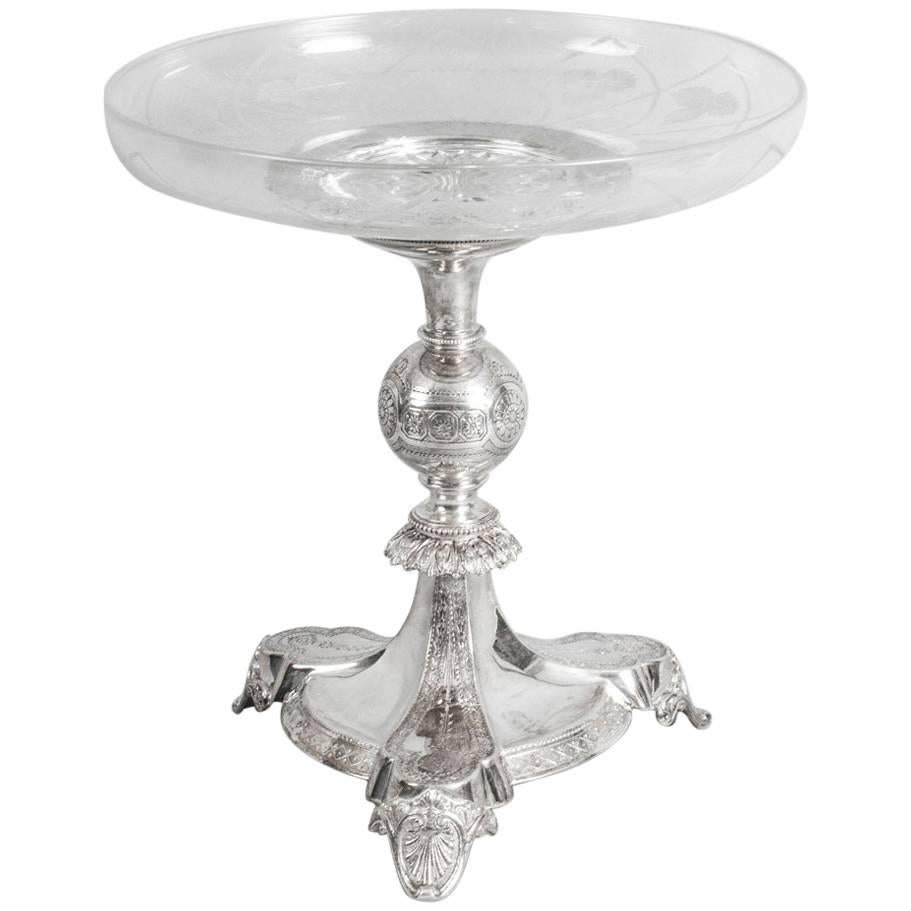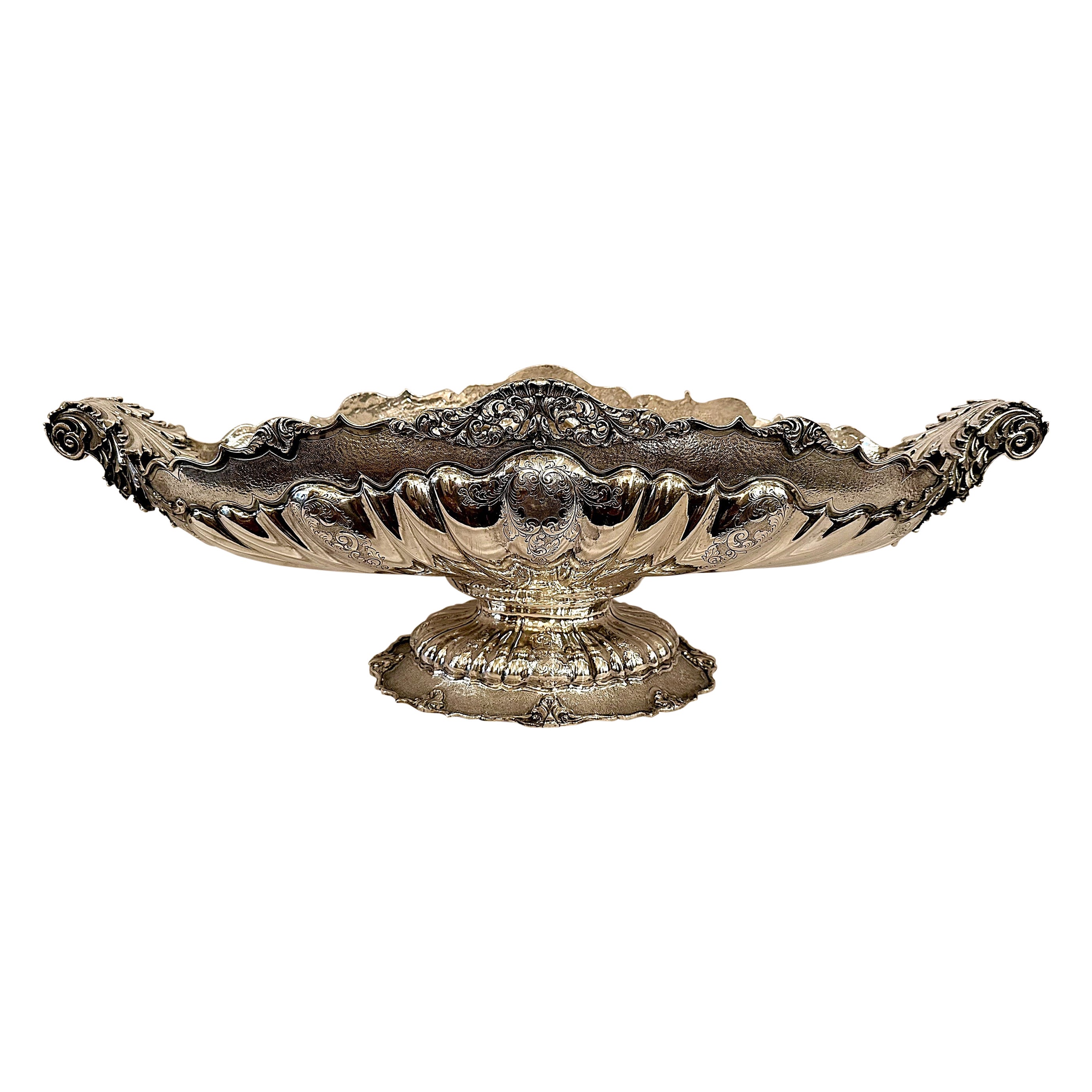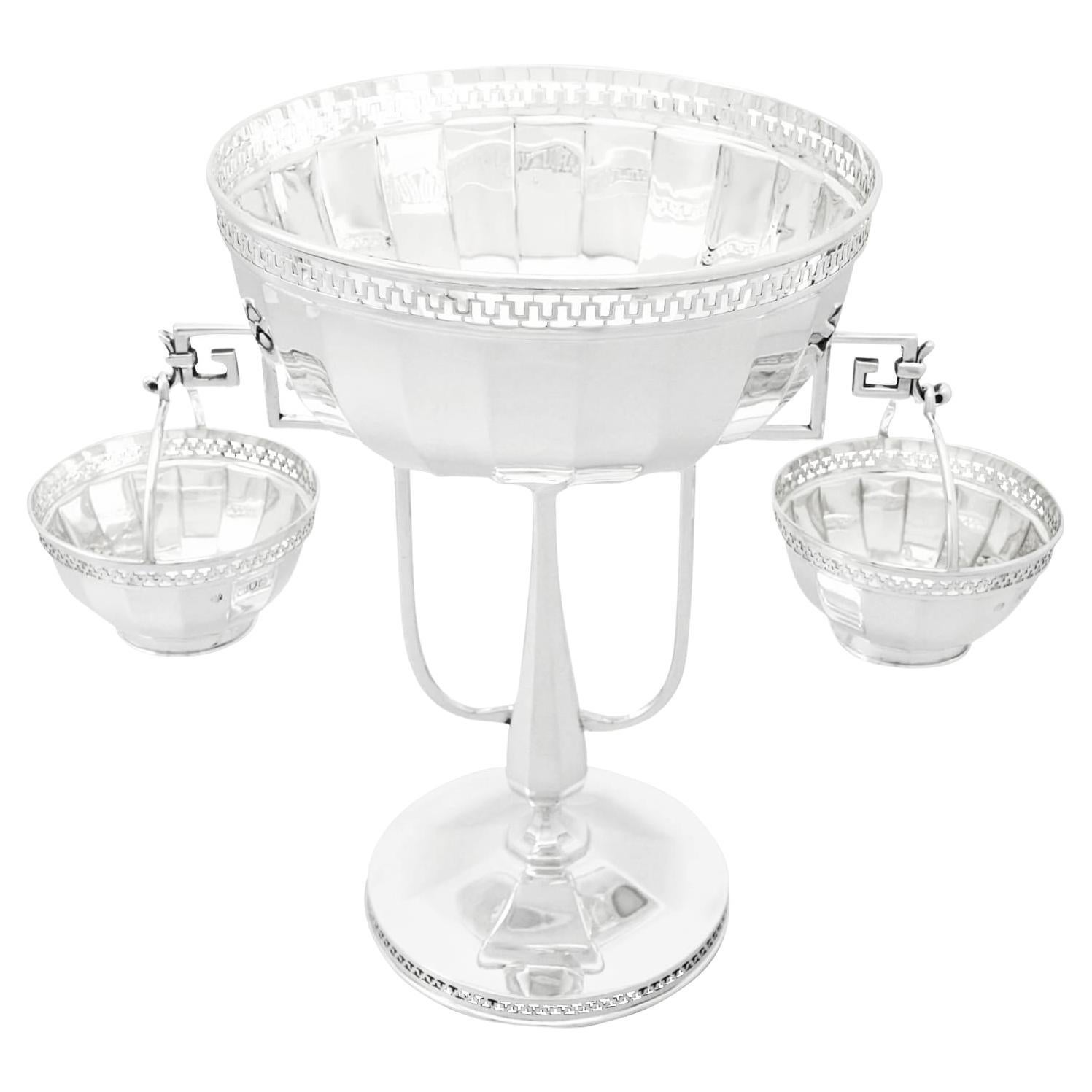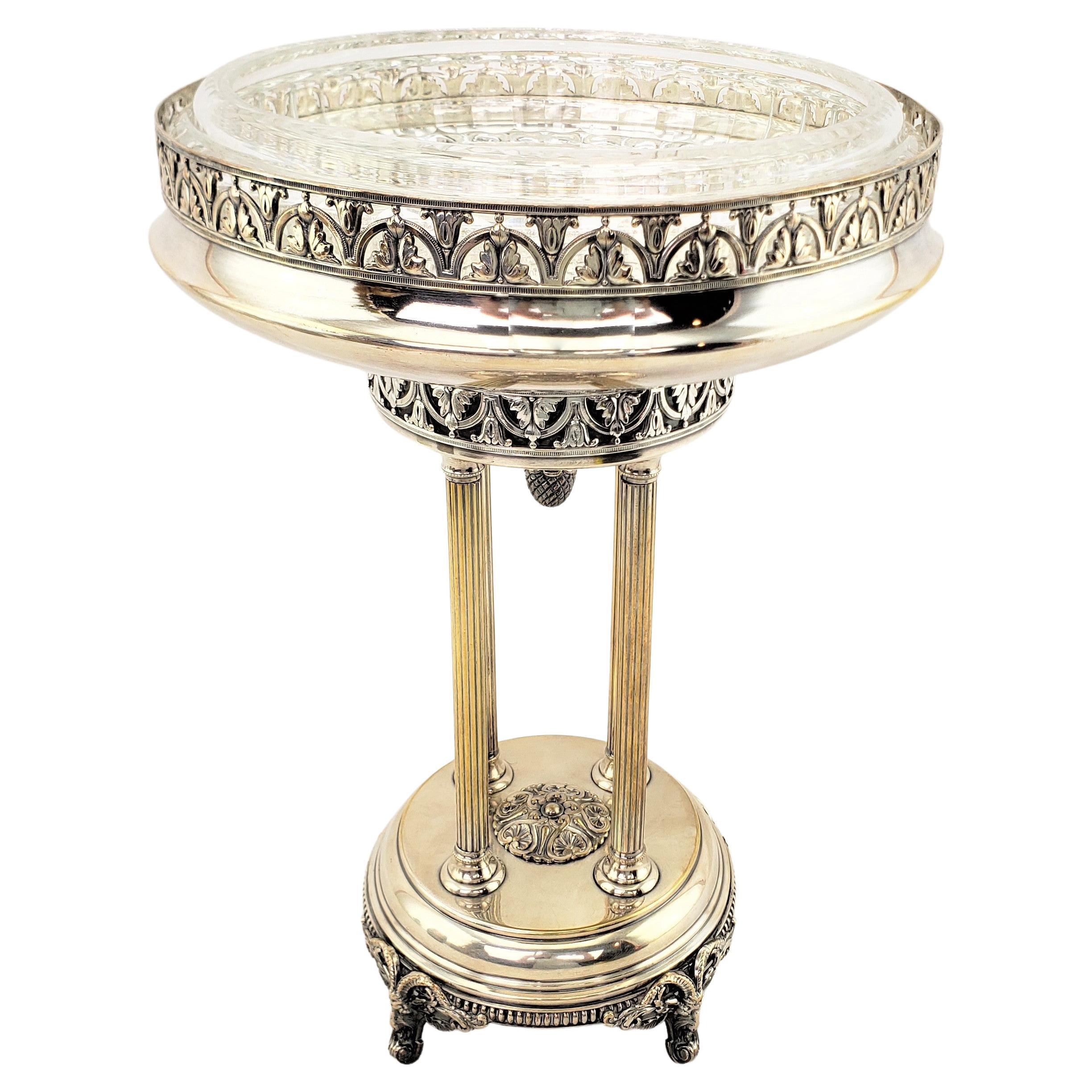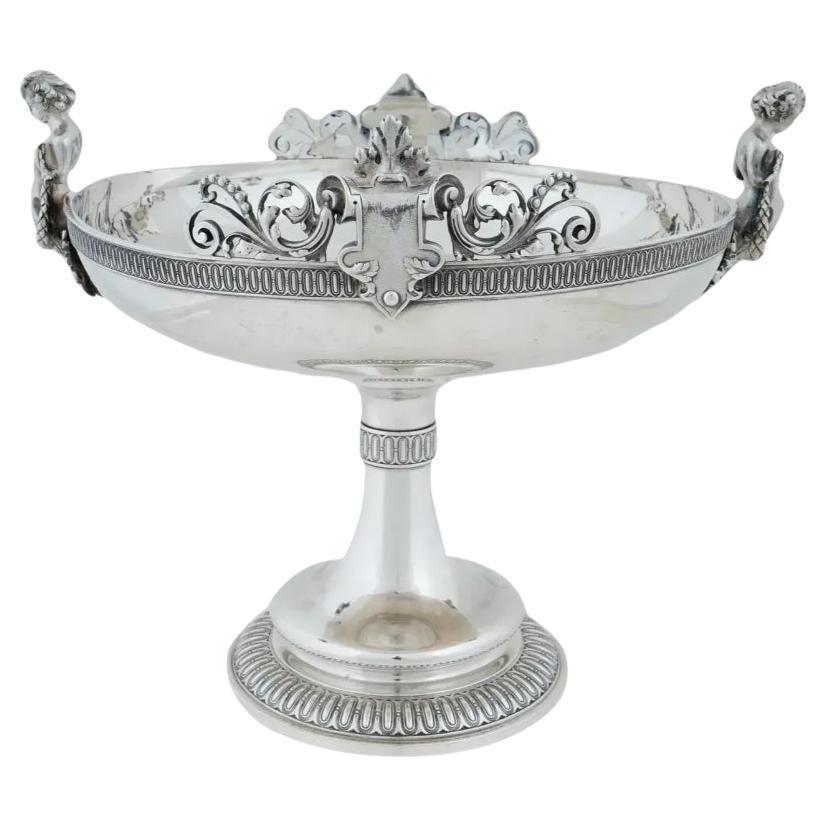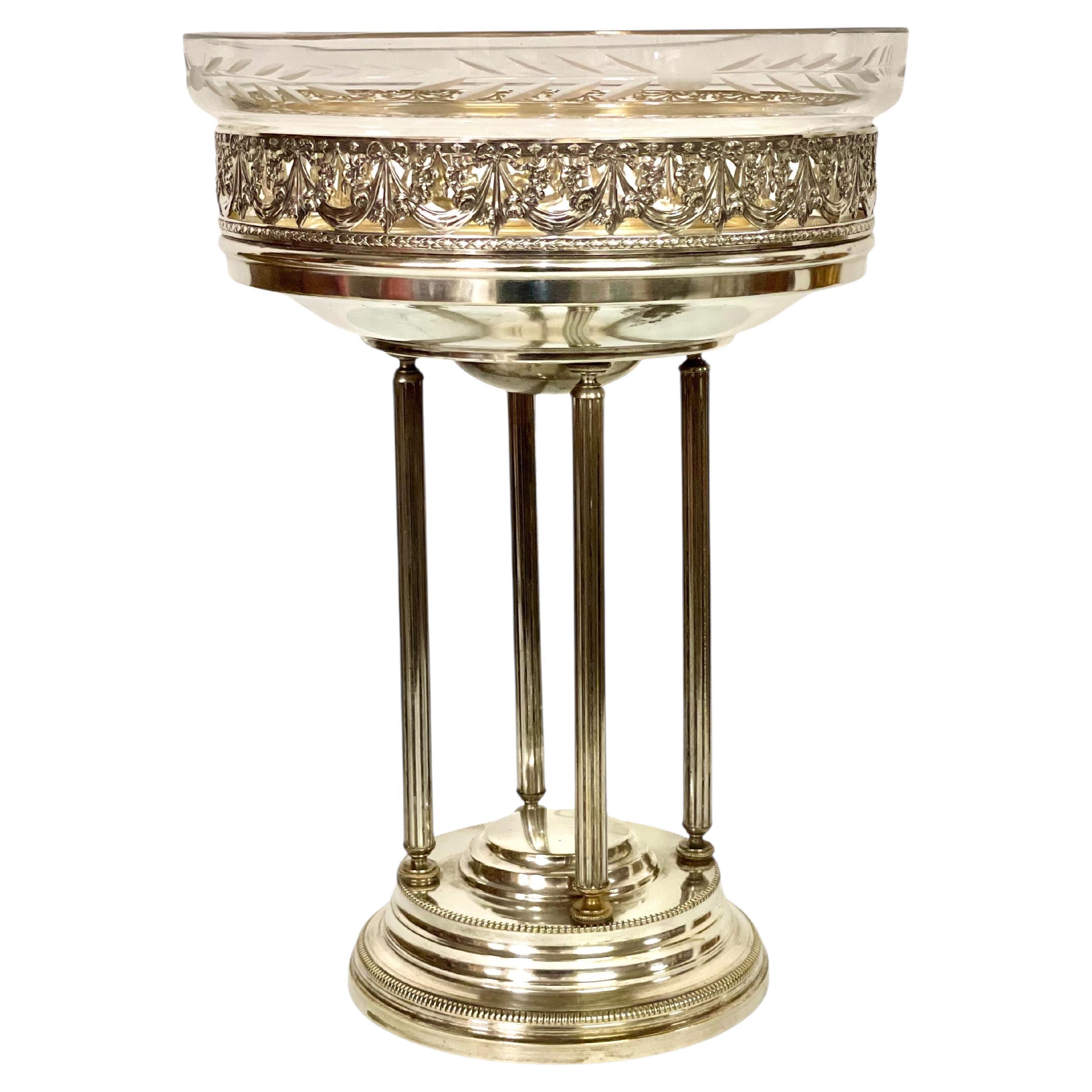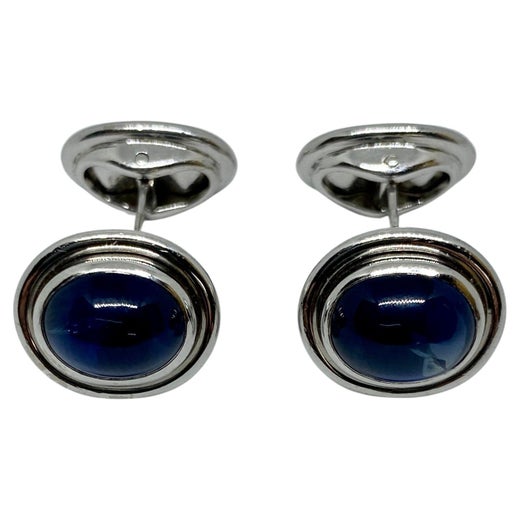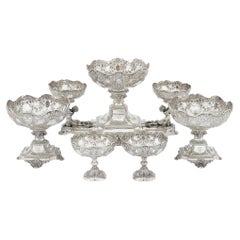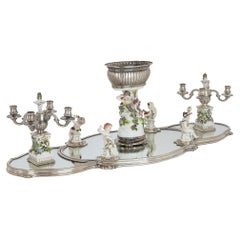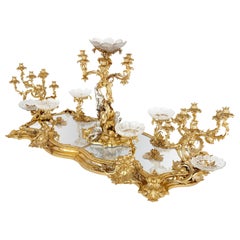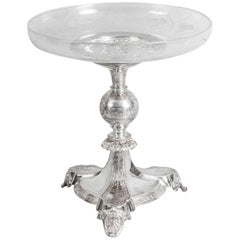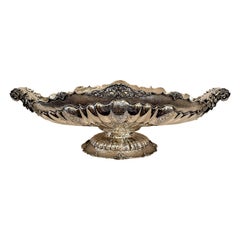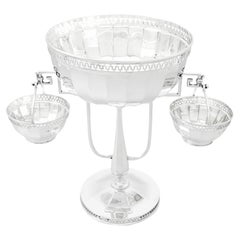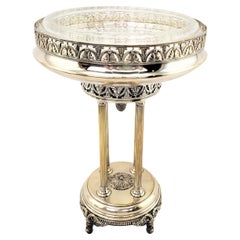Asprey Vermeil and Silver Table Centerpiece
About the Item
- Creator:Asprey & Garrard Limited (Maker)
- Dimensions:Height: 13 in (33 cm)Diameter: 31.5 in (80 cm)
- Materials and Techniques:
- Place of Origin:
- Period:
- Date of Manufacture:20th Century
- Condition:
- Seller Location:London, GB
- Reference Number:Seller: 166811stDibs: LU956321879052
Asprey & Garrard Limited
The first official Crown Jeweler for the British royal family, Garrard & Co. Limited has crafted iconic and historically celebrated rings, watches, necklaces and other jewelry for centuries.
Garrard Co. Ltd registered its current name in 1909 and, despite a temporary merger and relocation with Asprey, the firm still operates out of its original location on Albermarle St. in London. It was acquired by American private equity firm Yucaipa Companies in 2006.
Master silversmith George Wickes founded Garrard in 1735 and quickly gained a regal platform with patronage from Frederick, Prince of Wales. The company underwent a range of name changes and shifts in leadership over the years, with Robert Garrard becoming a partner in 1792. He assumed sole control of the firm a decade later and eventually passed the company down to his sons — James, Sebastian and Robert Garrard II — where it would remain in the Garrard family until 1946 with the death of Robert’s great-grandson.
Garrard created silver, tableware and decorative objects for the royal family as well as the Crown Jewels for a range of coronations beginning with King Edward VII’s in 1902. The esteemed luxury house created Queen Victoria's Small Diamond Crown, which featured colorless stones and was suitable to be worn while she mourned the passing of her last husband, Prince Albert. Later, for the coronation of Queen Elizabeth II in 1953, Garrard provided a pair of gold armlets. The company’s 1893 Girls of Great Britain and Ireland tiara adorns Queen Elizabeth II on British banknotes.
Among Garrard’s best known works is undoubtedly Princess Diana’s engagement ring — a 12-carat blue sapphire surrounded by 14 diamonds, set in 18-karat white gold. Unlike most royal engagement rings, the one Princess Diana chose wasn’t a one-of-a-kind piece commissioned from the Crown Jeweler, but rather a catalog offering for anyone who could swing the $60,000 price tag. As a result, this was a matter of controversy within the royal family. It is now Kate Middleton’s ring.
Garrard is committed to ethical sourcing and sustainable practices. Today, its all-female design team — led by creative director Sara Prentice — continues to merge ageless techniques with modern technology to uphold the firm’s legacy in the creation of precious handcrafted engagement rings, brooches and other adornments.
While Garrard and the royal family parted ways in 2007, the house still produces pieces that captivate new generations of jewelry wearers all over the world, just as it has for hundreds of years.
Find antique Asprey & Garrard Limited jewelry and furniture on 1stDibs.
- ShippingRetrieving quote...Shipping from: London, United Kingdom
- Return Policy
More From This Seller
View AllEarly 20th Century English Edwardian Sterling Silver
Silver
Antique Early 1900s French Art Nouveau Centerpieces
Crystal, Silver
Early 20th Century French Centerpieces
Silver
Antique Mid-19th Century English Louis XIV Centerpieces
Silver
20th Century Italian Modern Sterling Silver
Sterling Silver
Early 20th Century Russian Neoclassical Glass
Silver
You May Also Like
Antique 1850s English Sheffield and Silverplate
Silver Plate
Early 20th Century Italian Centerpieces
Sterling Silver
Vintage 1910s English Centerpieces
Silver, Sterling Silver
Early 20th Century French Neoclassical Revival Sheffield and Silverplate
Silver Plate
Antique 19th Century Unknown Centerpieces
Sterling Silver
Antique 19th Century French Centerpieces
Crystal, Silver Plate
Read More
Exquisite Sèvres Porcelain Brings More to the Table than Dishes
The elegant ceramics represent the best of French artistry and innovation.
What Is Ormolu, and Why Are We Talking about It?
This golden material glamorized neoclassical furnishings and transformed upper-crust sitting rooms from France to Philadelphia in the 18th and early 19th centuries.
